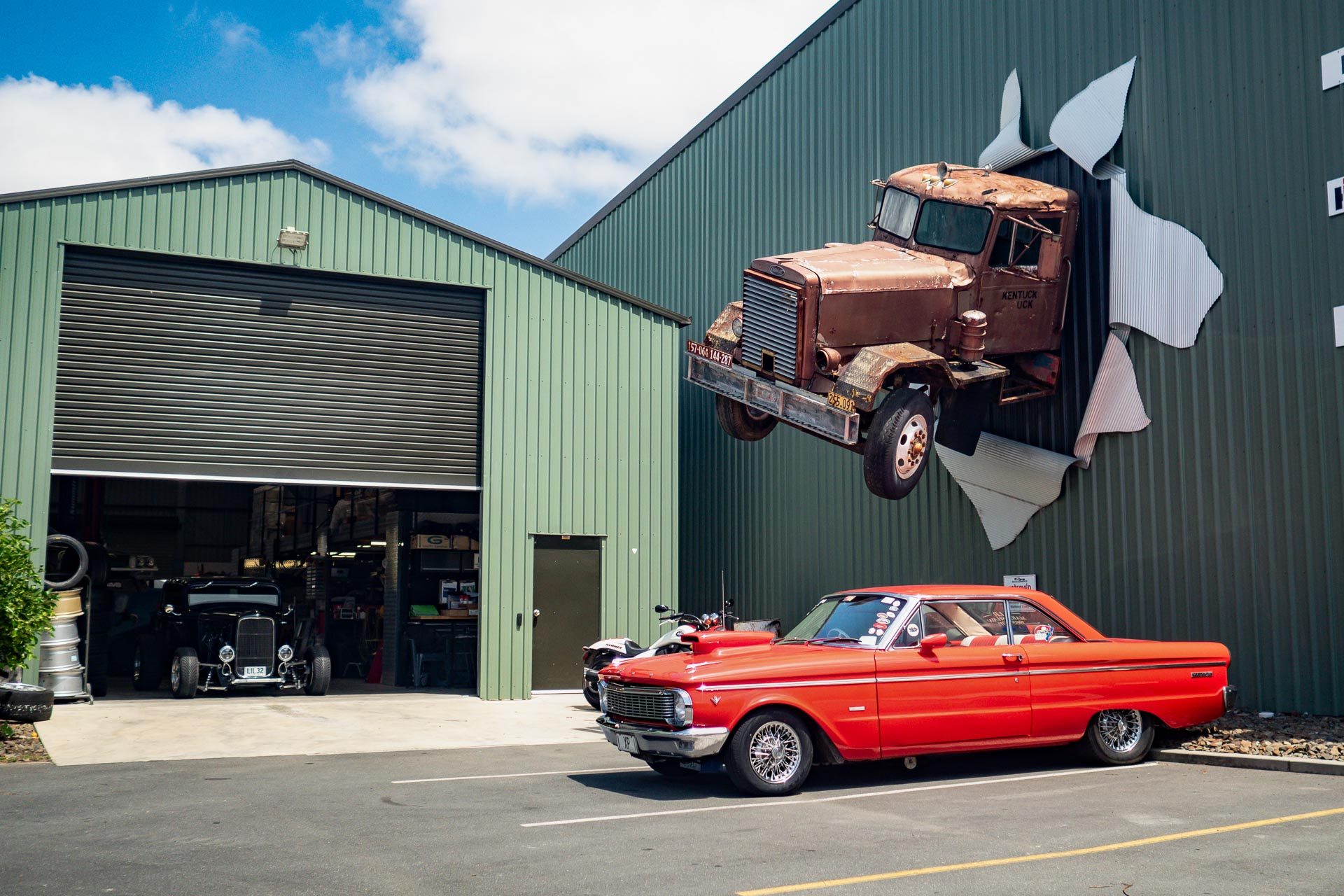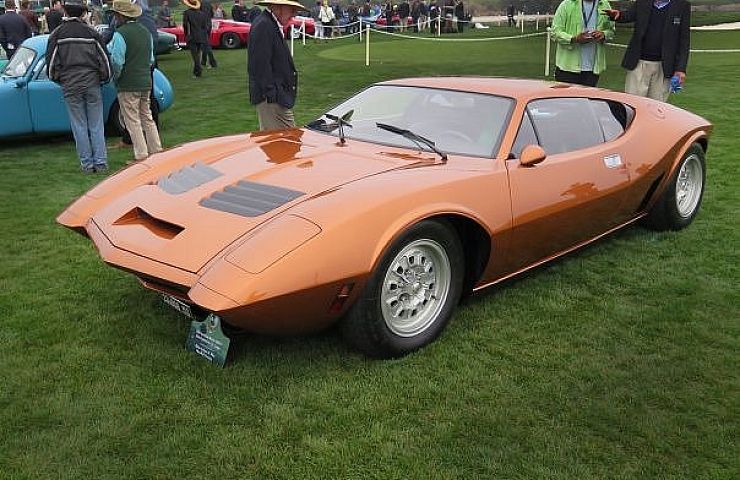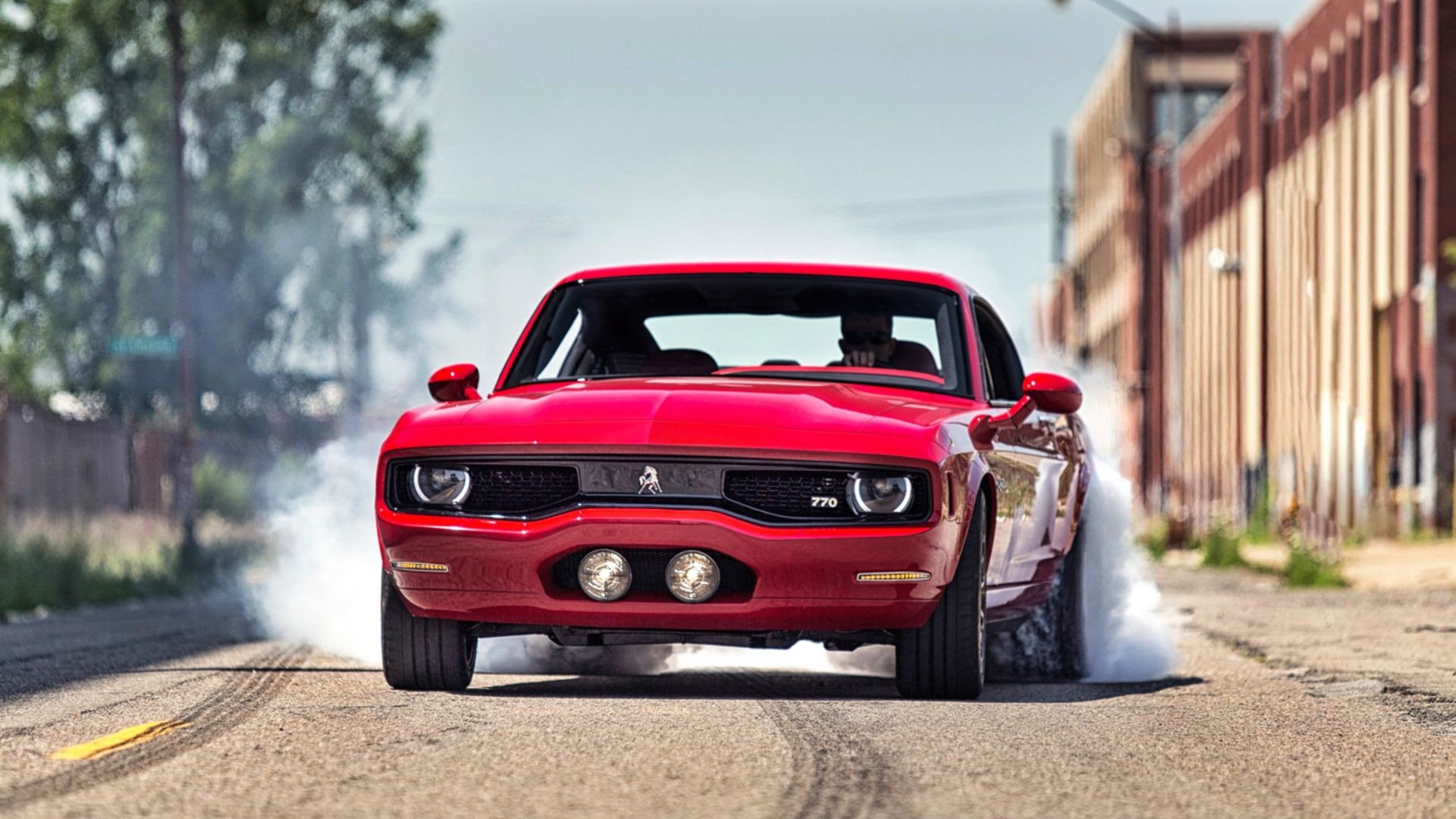Denon DN-D4500 dual rack mount CD-deck
Several years ago Denon released the DN-4000, the predecessor to the new DN-D4500. The 4000’s 2 rack units + 2 rack units “fit anywhere” design, together with its reputation of a simple to use, easy to rely on, audio workhorse meant that it got, and gets used and abused in thousands of venues worldwide.
The new DN-D4500 has built upon the popularity of its predecessor and added extra features to it, for little or no difference to the retail price. MP3 users especially will enjoy being able to do almost anything with an MP3 disc that they can do with shop bought audio CD’s – and more besides.
DJ’s everywhere will be pleased to find out that user choice and preference plays a trump card in this and other Denon CD-decks.
Drawer closer…and closer.
It’s a bit of a tease, but lets start with the DN-D4500 drawer unit. A standard 19inch rack mount unit, measuring only 2 rack units high, with two proper opening/closing drawers. The power button is recessed into the front panel of the unit, and is protected by an effective hood, which prevents you off’ing the power accidentally while leaning forward over your gear to talk to that Tracy who keeps asking for R’n’B all night, but can’t name any R’n’B artist or track.
Whilst talking of drawers however, isn’t it fun when you accidentally eject a disc whilst its playing. No, it isn’t really, is it. The DN-D4500 not only has the semi-common safety feature to ignore the drawers open/close buttons whilst the CD in that drawer is currently playing, but can also be set to ignore the Track Select control during disc play too, saving you from the embarrassment of silence followed by the even more embarrassing sound of jeering, which will be engraved into your brain if you’ve ever accidentally changed tracks mid-play.
Another, albeit less embarrassing event is getting a CD, your fingers, your headphone cable, roadie etc trapped in a closing CD drawer, or worse still walking into a CD drawer that’s been left open. To counter these potential nasties, the DN-D4500 drawers close automatically after so many seconds; how many seconds…aha…you choose! How? Well, remember above that I mentioned choice? You can choose an Auto-close time on the CD-drawers, so if you’ve been rammed into a tiny corner between the 12 piece band and the fruit machine, and space is tight, you can set the auto-close time to 10 seconds, so its open for less time. Elsewhere, where space isn’t so tight but, quick disc changes are required at short notice like when the Bride insists on “Girls just want to have fun…NEXT !!!, you might prefer the drawers stay open for 30, 60 seconds or just never close on their own – eagerly waiting to gobble your disc. Like all Denon Presets – your settings are remembered from gig to gig – even after the units unplugged from the power – more on Presets later.
The drawers have a slightly recessed dish in the middle of the drawer, probably your CD-rom drive drawer has one too – go on, have a look…. did it? Oh ok, good. This allows the unit to play the promotional/cutesy 8cm discs without some risky flimsy plastic adaptor, as well as the industry standard 12cm discs.
Waiter?! The menus please.
Just like on the drawer Auto-closing times mentioned previously – Overall there are over a dozen features in the DN-D4500’s Presets, which with other CD-decks, you’re just stuck with the factory-fitted settings each and every time you switch on. Would you rather your DN-D4500 show you the Remaining time left on a playing track, rather than Elapsed time (I know I would…I know whether I’ve got enough time to dash to the loo and back before the track ends)?, and you’d rather the CD paused automatically when it reaches the end of each track, rather than playing the beginning of the next track through the fader that you accidentally haven’t faded out yet? You’d like your Denon display to flash a warning when theres only XX seconds of track left to play, and you’d like your DN-D4500 to remember all these settings gig after gig, without you re-adjusting them every time…you can!… That’s the beauty of Denons Preset Menus.
“C’mon, C.mon…oh yeah, quicker, quicker, c’mon…LOAD!”
Also good for quick changes, is the ability which the DN-D4500 shares with most of the current Denon CD-decks, of allowing you to select the track number AS you’re putting the disc in the player, not just after the disc has entered the CD-deck, loaded the CD’s track info and spun-up etc. True, whilst leaving your hands free’d up instantly to move over to your mic and/or mixer, this feature may only save you 5~10 seconds during a last minute change of mind (or change of disc), but then what does 5 seconds of silence sound like – as far as your audience is concerned?
Each of the two drawers has an open/close button and a super bright LED mounted above each drawer to illuminate the loading area. However…Not even these hyper bright blue LED’s are going to help when you’re trying to read your self-adhesive CD-label with 250 MP3 track listings printed on it in font size 2.5 … Lets talk MP3’s
MPfree and easy
Whilst some other manufacturers have turned their backs on the format for as long as they could, there’s no doubt that Denon have embraced MP3 as a valid and workable DJ medium. The DN-D4500 incorporates the same MP3 library feature that Denons other, top-end CD-decks boast giving you the ability to search all the MP3 tracks on a CD in Alphabetical order, by either Artist Name, or Song Title. Simply press the (now standard) Parameters Knob on the Denon for two seconds to enter the Search mode, and choose whether you’d like to search the CD by Artist Name or Song Title.
With an MP3 disc loaded, featuring a load of disco favourites, Lets say we choose Artist name. On screen is Abba – Dancing Queen. Turning the parameters knob gives me “Abba – Fernando”, “Abba – Waterloo”, “Amy Grant-Baby Baby”, “Anastasia – Left Outside Alone”, and back round to Dancing Queen. Now, If I turn the parameter knob whilst pushing it in, I get the B’s, the C’s, the D’s etc… If I take it up to “T” for example, let go the display shows “Tiffany – I think we’re alone now”, “Tight Fit-The lion sleeps tonight”, “Tight Fit-Back to the sixties”, “T Rex – I love to boogie” etc… Easy. When the track that I want to play, is on the display, I simply press the large illuminated “CUE” button, the display says “Searching” for a few seconds – then the Cue button lights up steady, and the track is cued at the beginning, or can be cued manually to any point.
How do they do that? (I’m sorry, I hyphen a clue!)
Does this stunning MP3 search feature require any pre-planning, or some clever Database to be stored on the disc – well, nope – not really. All you need to do is make sure that the filenames of the tracks which you’re burning to CDR are in the format of artist name then song title, separated by a hyphen – that’s a minus sign to you roadies out there! Eg: “James Blunt-You’re beautiful.mp3”. That’s nice and easy and the only problem that I’ve found with this is if you have artist names with hyphens in them. So, if you had “Murder on the dancefloor” stored in the format of Artist name-song title, you’d end up with an artist called “Sophie Ellis”, and a track called “Bexter-Murder on the dance floor”, not too much of a problem as you’d be able to find it under the “S” artist names, and I’m sure that Sophie wouldn’t mind you missing the minus out of her name.
Obviously, tracks can also be selected on ordinary audio CD’s by number eg: “Track 12” or “Track 16” etc… but, the Denon makes accessing these tracks easier too. Turning the Track select knob (with a soft click every few degrees) steps you forward, or backward through the track numbers 1 track per click at a time, however, pushing the Track select knob down while turning it, steps you through 10 tracks per click. Audio CD’s with CD-text on them, will have their Album and Track text scrolled across the main display.
Constantly Variable, or variably constant?
If I were to ask you how many building blocks would be need to be placed end-to-end to reach from one end of a room to the other, you’d ask what size the blocks are. If I said “variable” you’d only be able to make a rough, approximate guess as to the answer – the same goes for Variable Bit Rate Recording – a problematic format, with only an 11% to 25% average space saving on a CDR costing 4 pence a piece.
So, when copying your entire vinyl, cassette tape, and CD singles collection onto recordable CDRs or CDRW’s (The DN-D4500 is equally happy with Recordable and Re-writables disc), do yourself plenty of favours for now and the future, by only choosing Constant Bit Rate encoding (CBR), rather than Variable Bit Rate (VBR) Recording, on your CD-recording software. Features relating to precision timing such as Manual (frame by frame) searching within a track, accurately editable Seamless Loops, accurate remaining track/disc time etc all need Constant Bit Rate formats. So, stay constant on your encoding now, and you wont regret it later, with either this, or other models. Using VBR can save you between 11~25% capacity (depending on the tracks musical content), but CDR’s are so cost effective now, that burning 100 discs instead of 75 will cost you only a £2.50 more in blank CDR costs.
Delivery Bay – yep, ’round the back.
On the rear of the 2 rack unit high (88mm without its rubber feet) drawer unit, are a captive (can’t fall out) power lead, a multi-pin socket for the connection to the Main control unit, a red and a white phono/RCA socket for the left deck, a red and a white phono/RCA socket for the right deck. Each deck also has an orange digital out socket running at -6db of normal output, for distortion-free connection to the ever increasing number of mixers with digital inputs.
“Don’t get me started!…oh go on then”
The DN-D4500 is also blessed with a standard 3.5mm stereo jack fader start socket for each deck, meaning that you can have your chosen track start up instantly, the moment that you move the crossfader or channel fader on mixers equipped with the fader start function – a handy feature for when you’re already juggling a microphone, a request slip, and a mixer fader.
Back to the Front:
Ok, enough teasing. We’re onto the main front panel. At only 62mm deep (+ 18mm if you keep the rubber feet on), and only 2 rack units (88 mm) high the control panel should fit effortlessly into the top slanted section of any DJ console or flight case – or of course above or below a 19inch wide DJ mixer.
As with all current Denon dual CD Players, the controls for the left deck are identically laid out when compared to the controls for the right hand deck – not mirror imaged as I’ve seen on some units – that was a little too confusing, even for me. (Ooohh? Who said “Especially for you?” cheeky!).
Dots and Dashes.
To enable a minimum number of buttons to operate and adjust the plethora of features offered by the unit, four of the buttons have two functions on them. A brief press of the button gets you the feature labelled with a dot in front, a 2 second press gets you the feature labelled with a dash. Thankfully, Denon have thought carefully about which functions need a full 2 seconds to access them, and which actions you need to be able to perform instantly. For example, a low priority function, like seeing how many Hours, Minutes, and Seconds you’ve got left to play on the CD, or adjusting your favourite presets, is a 2 second press. Important buttons, which need rapid/instant control, such as ermmm PLAY!!! Is instant (and internally illuminated, handy as we work in the near-dark). The Cue button is also illuminated. Both buttons are large, rubbery, have a good tactile feel and a reassuringly deep travel – rather than the flush metal “Lift call” type buttons found on some other units.
The largest control on the panel is the Search wheel, which allows you to move back and forth through the frames of a track to accurately find your perfect cue point, just like a mini vinyl record. This same control also acts as a pitch bend when the track is playing, enabling you to nudge the track a little faster, or dab down the track a little slower to match beats with another track when beat mixing. For those DJ’s who prefer to do their Pitch bending with buttons, two tactile Pitch Bend buttons (+ and -) are featured on the panel also.
Around the outside of the Search Wheel is the Scan Collar. Which, when you’re cueing up a track, allows you to jump quickly forwards or backwards by a so many seconds. How many seconds? What works best for you? 1 minute jumps, 10 seconds jumps…sorry, I’m teasing again… the DN-D4500 Preset menu, mentioned earlier, allows you to preset how big you want the jumps to be, 10seconds? 20? 30? 1minute? You choose – and it remembers your choice, gig after gig after gig – until you want to change that setting, which takes seconds.
Operating the scan collar is a little like holding the lid of a jam jar, a nudge a few degrees clockwise jumps you forward, a nudge a few degree anti-clockwise jumps you backwards. Get roughly where you want to get to using the scan collar with your own personal preset jump times, then home in to the exact frame that you need, using the inner search wheel. Thanks to the user-adjustable jump steps, fast accurate cueing doesn’t get much quicker than this.
Sales Pitch
The DN-D4500 two pitch sliders (one for each deck) are pretty much the full height of the 2U high control panel, and confirm to the usual layout of Zero in the middle, slide down for faster, slide up for slower. How fast and how slow? Again this is adjustable to the DJ’s preference and musical needs, using a 2 second press of the button marked “Key Adjust/Pitch Range”. The pitch range is selectable between +/-4% for easy precision where the tracks you’re mixing are close in BPM terms, 10% (a happy medium), 16% (for those tracks where their BPMs differ a lot, also 24%, and even 50% and 100% (The only way to play the Birdie Song, or Opps upside your head).
For the beatmixers among you, who like to keep long running mixes held in sync for ages, you’ll be interested in knowing that the pitch increments are 0.1% at pitch ranges up to +/-16%, and 1% increments at the higher pitch ranges.
Chipmunking vocals at high pitches and Darth Vader vocals at slow speeds is avoided by a very smooth “Key Adjust” system (which some my know as “Master Tempo”. This feature is simply switched on, or off from a brief press of the Pitch Range button and can even be set in the units Presets, to come on as default every time you power up, which saves any nasty surprises on your first mix of the night.
For momentary increases/decreases in the speed of the track that’s playing, eg: when getting two beatmatched songs into sync with each other, there are Pitch + and – buttons provided, which are progressive, eg: The longer you keep your finger on them, the more effect they have on the playing speed. When you’re using a pitch range between 4% and 24%, the pitch bend buttons offer +/- 32% bend, at higher pitch ranges you get +/-99% which can lead to some very interesting effects.
Here we go loopy-loop…
The DN-D4500 boasts two seamless loops – that’s more than most CD-decks, not quite as many as its bigger brothers, and definitely the right amount for convenience and remix-ability for most mobile situations. Unlike a mere sampler, the seamless loops can be of any length – not just so many seconds.
For the uninitiated a seamless loop is simply a feature where you can set a beginning point and an end point in a track, which will then play over and over again, without a gap, or break in the music. This practice has got a number of big benefits to mobile DJ’s and Remix DJ’s alike. With Seamless loops you could loop the short instrumental intro of a song, giving yourself as much “talk-time” as you need to announce the guest of honour, the current bar promotion that the landlord wants you to plug, the reminder to the guests about signing the bride and grooms guestbook, make fun of that blokes day-glo tie etc,etc.
You could also use the 2nd seamless loop to make the middle couple of minutes of a popular audience favourite last even longer – just think, 6 minutes of Amarillo?, 8 minutes of Dancing Queen?…It’s like being able to change any of your “radio edits” into 12inch extended mixes – without all that wishy washy instrumental breakdown three-quarters of the way through. Just be sure to call an ambulance first if you’re going to try 12 minutes of “Lets Twist Again” at the local Old Peoples Home Xmas Dinner Dance…
When you (or your audience) are ready to exit the loop, press Loop Exit (at any time, it doenst have to be “on-the-beat”) and the remainder of the track will carry on, seamlessly (of course), as if you’d never looped any of the track at all.
Off to a Hot Start.
The A1 and A2 buttons which you use to set the beginning of each loop, can also be used without looping – simply to let you set a point where you want to be able to jump forward (or back) to, instantly and seamlessly. For example, you might want to play a very recognisable beginning of a popular track and then when the first chorus comes up, instantly jump to the last chorus – thereby allowing you to effectively shorten a song, enabling you to finish bang on-time, much to the delight of that creepy hall caretaker who hovering by the main hall light switches waiting for 11:59:59…
Miss Jones? Take A memo.
Now, once you’ve got your cue point (avoiding that boring bit at the beginning of the song), your one or two seamless loops, or maybe a couple of Hot Starts, wouldn’t it be a shame for all your meticulous settings for that track to be lost…well? yes it would really. So…Thankfully the DN-D4500 has 1000 memo points which will store all this information for you. The next time you insert a CD (in either drive) which you saved memo points for, the DN-D4500 will ask you “Memo Call?”. If you press “yes” then the unit will set up the cue points, seamless loops, and hot starts for you, just the way you left them.
Memo points can also be deleted manually if required – for example, if a client lends you their shop bought original CD of their favourite artist and you’ve wanted to set specific cue points up for some of the tracks, you can delete the memo points for those tracks once you’ve finished playing those tracks. You can also delete blocks of 200 memos at a go too if required.
Conclusions:
Overall, the Denon DN-D4500 promises to be every bit the rugged workhorse that its much respected predecessor, the DN-D4000 has proven to be. Taking up a space of just 4 rack units, and weighing in at 13lbs 7oz (6.2kg) for the drawer unit, and 4lbs 2oz (1.9kg) for the control unit, any club or mobile disco should be able to fit this easy-to-use machine in almost anywhere.
This is very much the type of machine that anyone could walk up to and start playing music from. The 4500’s adoption of Denons user-definable presets, give you a great sense of this being your cd-player, and make using the unit both convenient and more natural – avoiding that feeling you get when you just “know” that someone else has adjusted your car seat and mirrors, and you then have to spend vital time re-adjusting things from the factory “norm”.
For DJ’s looking at saving transportation and venue space, (and their spines), this really is the entry level for superb MP3 track handling, especially the MP3 Artist/title search system – a feature previously unheard of on any dual deck.
The 1000 memo points too mean that whilst you’ve still got full artistic control over cue points, hot starts and seamless loops, you can save your efforts and save yourself time setting up tracks that your audiences enjoy, without risking the sporadic results of BPM driven “auto/emergency loops” chanced by some players






More Stories
Honda Civic Batam: Mobil Legendaris dengan Desain dan Performa Terbaik
Read Me Loud And Clear With The Behringer Eurolive B250D PA System
Connect an iPod to a Toyota Stereo